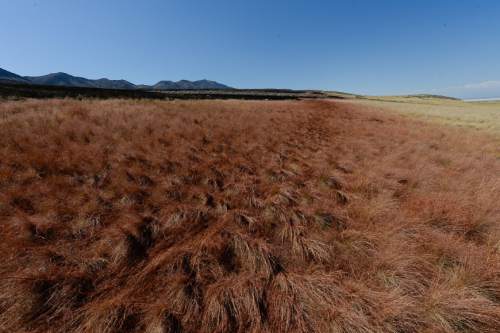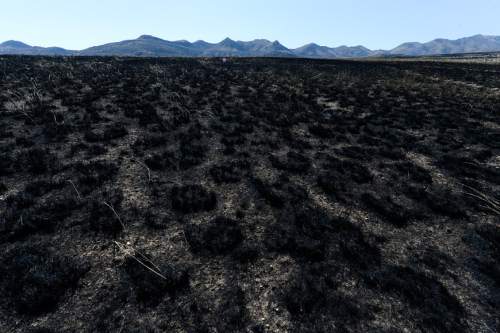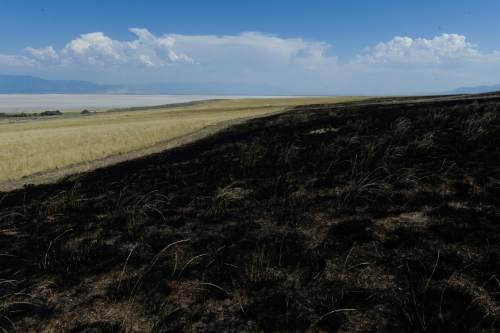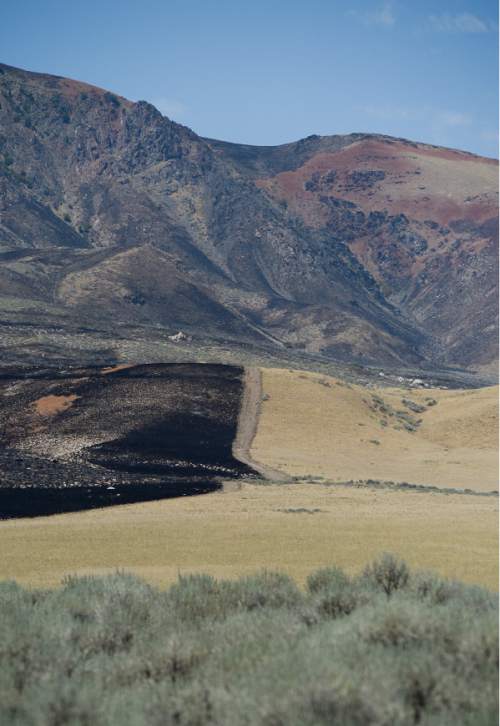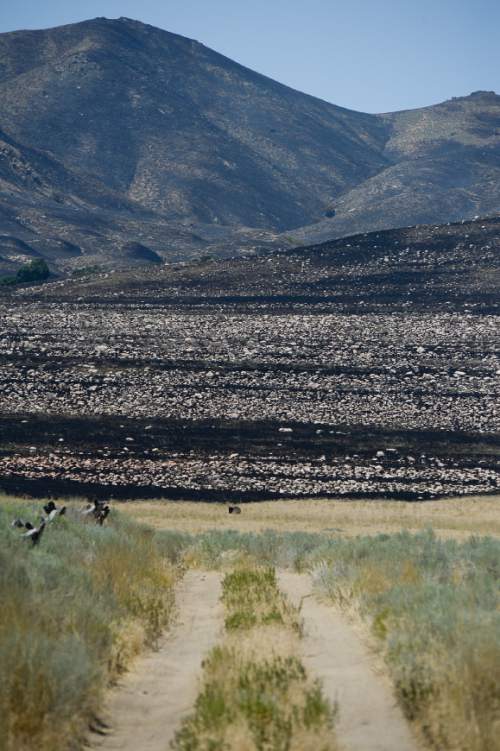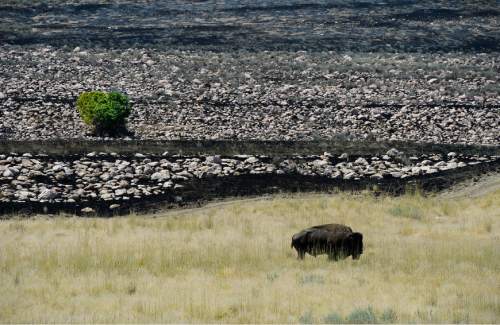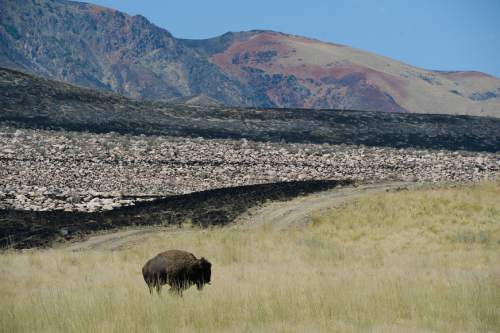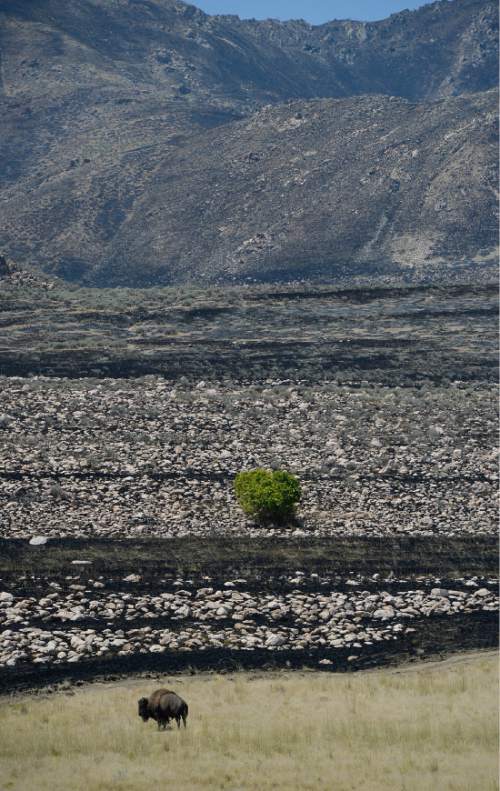This is an archived article that was published on sltrib.com in 2016, and information in the article may be outdated. It is provided only for personal research purposes and may not be reprinted.
A lightning-sparked wildfire that blackened half of the Great Salt Lake's Antelope Island was declared out on Tuesday.
Antelope Island State Park officials said that access to the popular Fielding Garr Ranch had been re-opened. However, all backcountry trails, including the island's scenic Mountain View Trail, remained closed.
"That will probably be the case for at least a week," Park Manager Jeremy Shaw said. "We just want to avoid having people back there in case we have any flareups."
Whipped by winds across parched swaths of high desert brush and grasslands, the West Antelope Fire consumed 15,111 acres from the time it was first spotted last Saturday.
The island is home to herds of bison or antelope, but no wildlife losses were reported.
Park officials plan to take several weeks to assess the impact of the fire on the island's recreation areas, as well as its effect on available forage for wildlife.
"There's a lot of good habitat remaining, though, so I'm optimistic there will be enough forage left to carry through," Shaw said. "There will be a reseeding effort, but we don't know yet how extensive that will be."
The Lower Ebbs Fire, which had burned 5,068 acres of sage, pinyon and juniper about 4 miles southwest of the Millard County town of Scipio, was 25 percent contained. The four-day-old blaze was had 250 firefighters, along with fire-retardant and water-bearing planes and helicopters, working to keep it from spreading further into the Ebbs and Wild Goose canyons.
Crews also were getting the upper-hand on wildfires elsewhere in the state. The 1,868-acre Choke Cherry Fire, near Callao, in Tooele County, was 75 percent contained as of Tuesday. About 20 firefighters worked to mop up remaining hot spots and close fire lines.
Several other, smaller wildfires were being monitored and allowed to burn as beneficial to rugged, remote forest and rangelands throughout the state. None of them threatened structures or were reported to be in danger of rapid spreading.
Twitter: @remims


